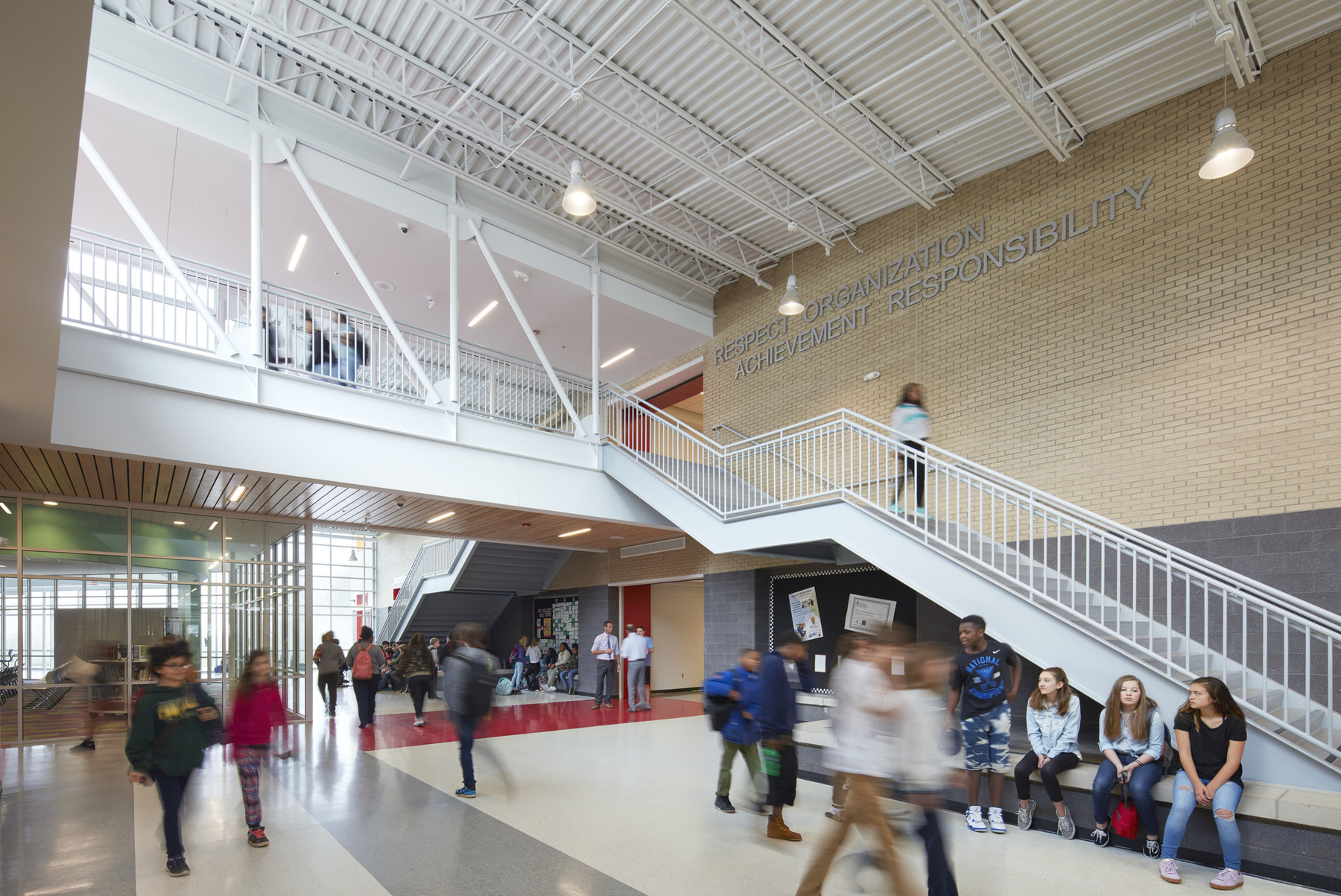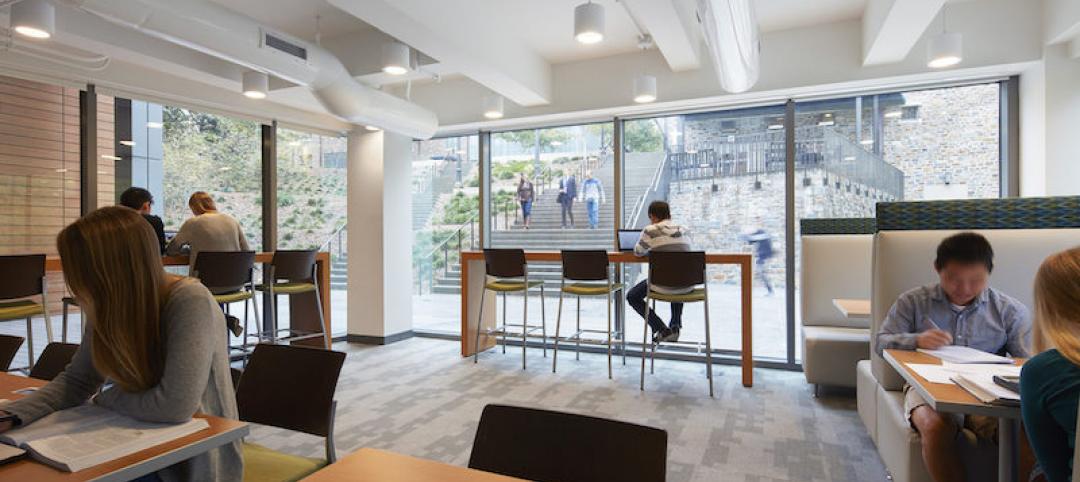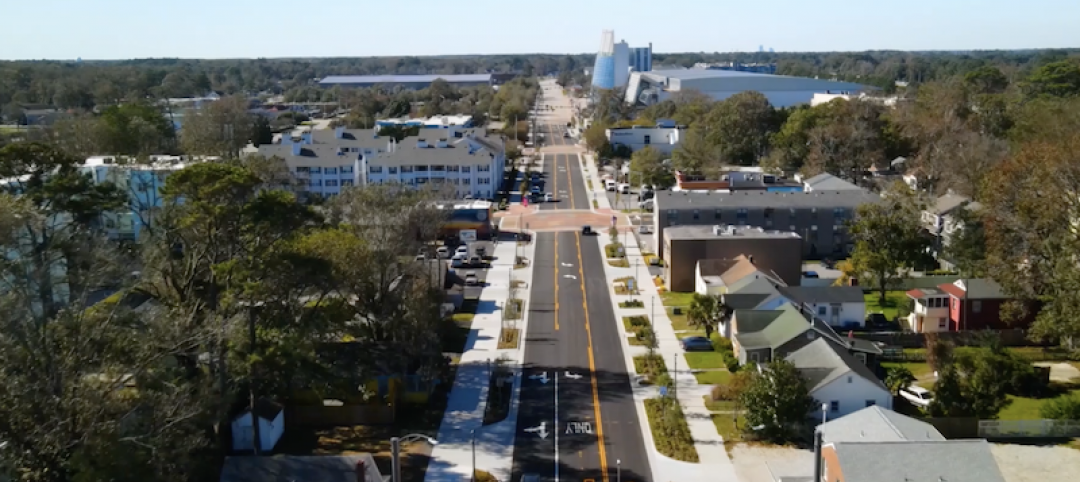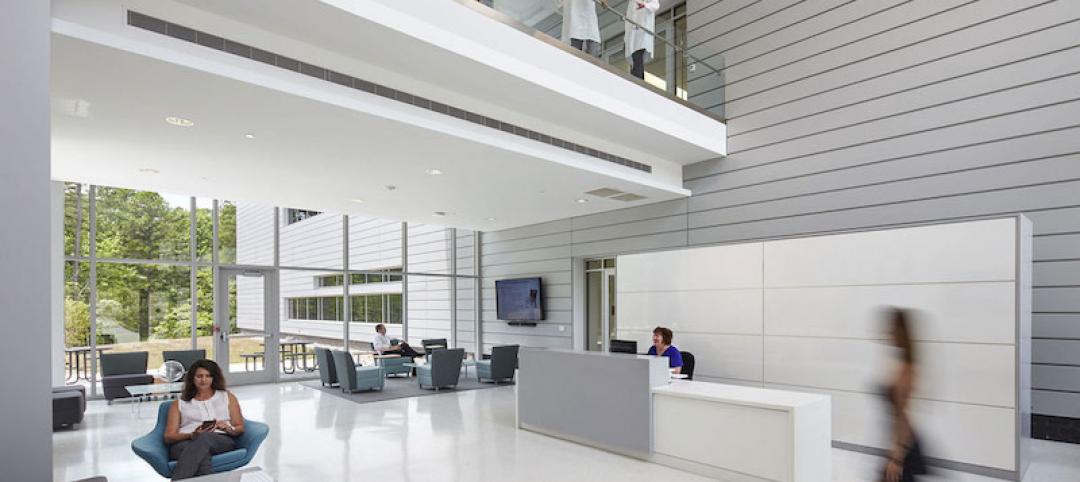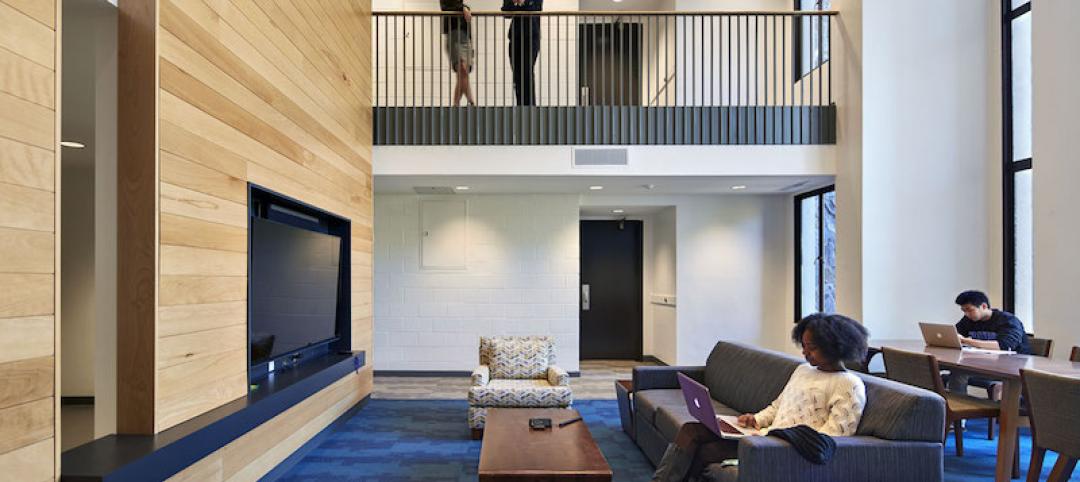Today, I’m an architect who focuses on designing K-12 schools and a mother to two school-aged children. In what feels like a lifetime ago, I was a student at Virginia Tech during the tragic mass shooting on campus in 2007. That event and experience has shaped my perspective as both an architect and a parent – bringing a unique sense of responsibility to how I approach design.
School shootings, or any violence in the school setting, weigh heavily on my mind and heart. In the days and weeks following a tragic school shooting, it is easy to get lost in conversations about school safety tactics that should have been or could be adopted to prevent further incidents. But what if we didn’t wait for a tragic event to occur before taking action?
At the design level, actions can be taken to ensure that both the campus and school building(s) are safe places where students can engage in a learning environment and have access to opportunities which support their overall health. Moreover, the design should account for various situations, such as bullying, self-harm, and mental health concerns.
Invisible Safety
There are many ways to improve school safety without focusing exclusively on hardening. Indeed, smart and subtle security and safety additions allow schools to be welcoming and engaging. While some schools may add metal detectors, remove windows, and resort to other safety measures, these strategies can detract from a positive learning environment.
Strategic efforts and multiple layers of safety that are seemingly invisible to the average person can make schools safer, such as limiting access through a single point of entry or installing advanced security systems. Even simple additions, like automatically locking doors, can improve the overall safety of a school or campus.
Increase Visibility
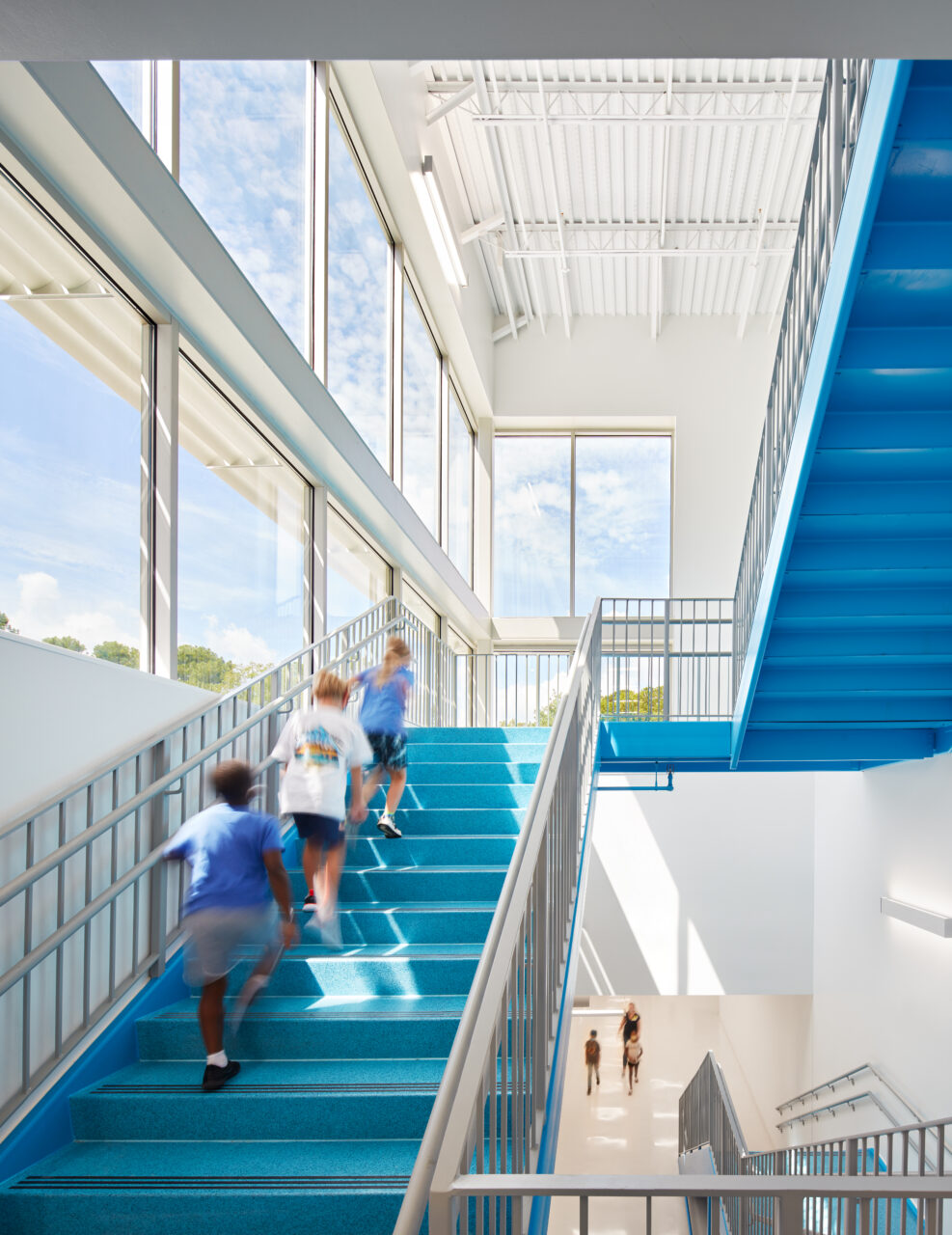
A natural reaction to school safety issues is to reduce sightlines and remove windows. However, research has shown that the more likely someone is seen acting inappropriately, the less chance they will act this way. As a result, strategically increasing visibility throughout a school by opening enclosed spaces such as stairwells or handwashing stations could mitigate bullying, inappropriate behavior, and other acts.
Moreover, increasing visibility throughout the building encourages the use of collaborative spaces within the school. There is a delicate balance in providing safety through visibility and creating a sense of security in a space. Designers should strive to achieve this balance by providing areas of refuge within a classroom while still maintaining opportunities for visibility to collaborative areas.
Improve Wellbeing
Students spend a large portion of their day indoors, affecting their overall wellbeing. Research has shown that spending just 20 minutes outdoors can boost focus, improve mood, and reduce stress. By designing and including outdoor areas such as community spaces, play areas, and green spaces, students can improve their wellbeing at school or on campus.
These spaces can also be woven into the school curriculum. Gardening, as an example, can be incorporated into a variety of science and health lesson plans while also supporting the benefits of improving students’ wellbeing.
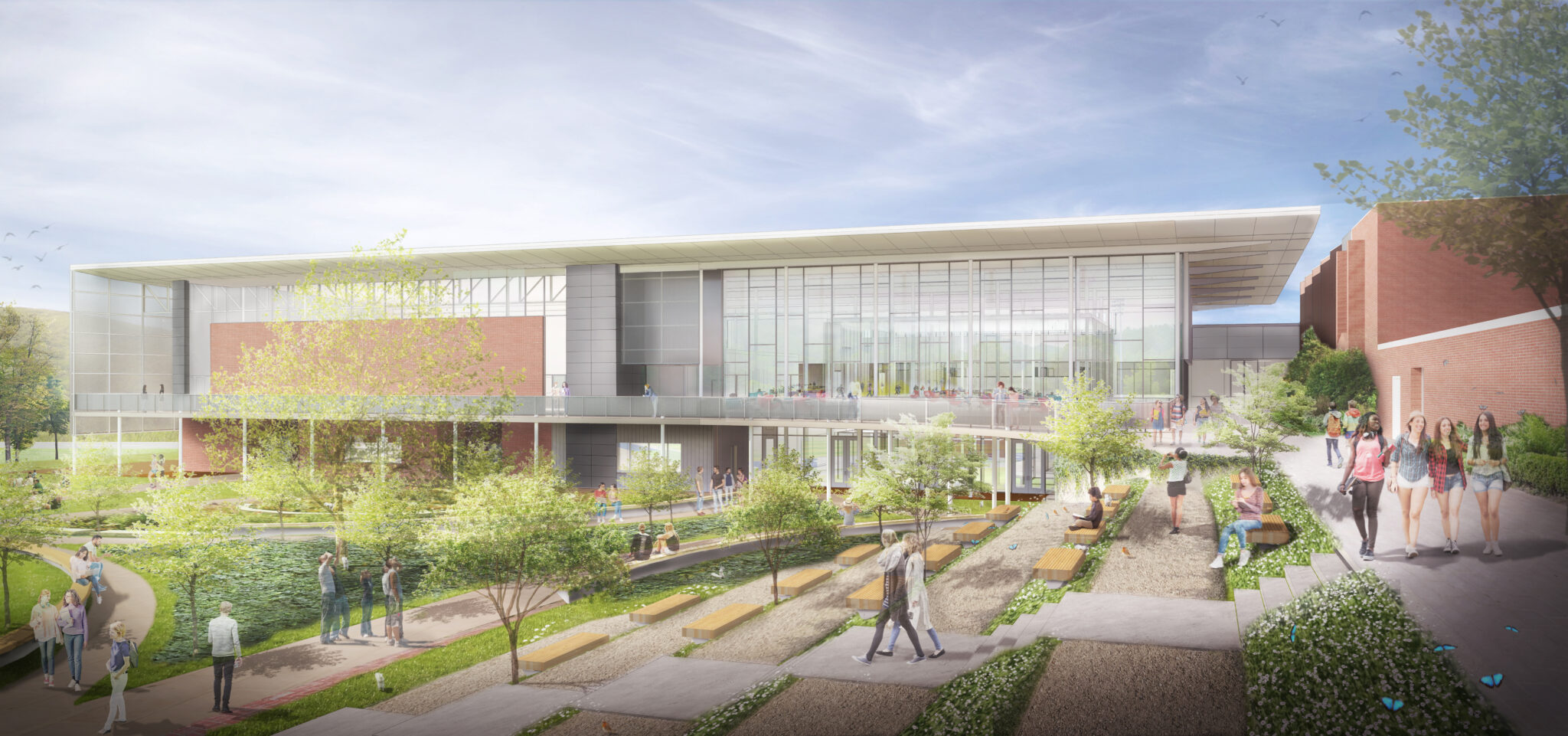
Establish Communities
Today’s schools can have large populations, making it easy to feel lost in a sea of students. Opportunities for smaller communities and social groups can be developed both during and after school hours. By breaking down large numbers with smaller communities, students are more likely to feel connected with other students and staff. Giving every student the opportunity to engage in smaller circles allows them to feel included, reducing the risk of outbursts or violence.

Create a Welcoming Environment
The impression a school gives to the neighboring community and the individual student makes a difference in the student's mindset. The building should be inviting, warm, and light filled, instead of feeling dark and imposing. Neighbors will inherently take pride in the school as a part of their community in the same way that a student will, and the community of ownership and responsibility will grow with this pride.
A school should primarily remain a learning environment, which supports students and staff to engage, learn, and grow. Taking action can come in many forms, from individual, political, and social efforts, to cultural changes in the way schools operate. While some aspects of hardening a school or campus may be appropriate, it is imperative that we look at the issues at hand with a wider lens through prevention.
Action should be taken to ensure that school buildings and campuses are a place where students can engage in a learning environment and have access to opportunities which support their overall health, resulting in safer campuses. While there is no one solution that will guarantee safety in schools, school communities and designers should continue to evaluate buildings, campuses, and culture as well as actively take part in the ever-changing conversation around safety.
About the Author
Becky Brady, AIA, CDT, LEED AP BD+C, is a senior architect and associate at Clark Nexsen with more than 15 years of design experience. Specializing in K-12 and educational design, she is passionate about school safety and served as a member of a national taskforce created by the Association for Learning Environments (A4LE) to study, vet, and consolidate school safety concepts.
More from Author
Clark Nexsen | Sep 30, 2024
The importance of selecting healthy materials for K-12 projects
Clark Nexsen interior designers Anna Claire Beethoven and Brittney Just, CID, IIDA, LEED Green Associate, share why it is imperative to specify healthy building materials in K-12 schools.
Clark Nexsen | Aug 1, 2024
How current and future trends are shaping the libraries of tomorrow
Over the last few years, public libraries have transitioned from being buildings that only store and lend books to being fully featured community centers.
Clark Nexsen | Apr 25, 2024
How pools can positively affect communities
Clark Nexsen senior architects Jennifer Heintz and Dorothea Schulz discuss how pools can create jobs, break down barriers, and create opportunities within communities.
Clark Nexsen | Oct 2, 2023
4 design strategies for successful K-12 magnet schools
Clark Nexsen's Donna Francis, AIA, Principal, and Becky Brady, AIA, share four reasons why diverse K-12 magnet schools require diverse design.
Clark Nexsen | Jul 1, 2022
How to apply WELL for better design outcomes
The International WELL Building Institute (IWBI) cites attracting top talent, increasing productivity, and improving environmental, social or governance (ESG) performance as key outcomes of leveraging tools like their WELL Building Standard to develop healthier environments.
Clark Nexsen | Jun 3, 2021
What's next for workplace design?
Balancing personal space and the need for collaboration.
Clark Nexsen | Apr 1, 2021
The changing face of freshman and sophomore student housing
As part of a surge in new housing projects for freshman and sophomores, we are seeing increasing demand for double occupancy rooms and suite-style arrangements in both new construction and renovation projects.
Clark Nexsen | Feb 17, 2021
Best practices for streetscape design that cultivates community
Well-designed streetscapes provide a wealth of benefits for their respective communities.
Clark Nexsen | Oct 20, 2020
Best practices in S+T office design
Within the constraints of the typical COVID-19 office protocols, lab users face the additional challenge of working with hands-on processes, tight schedules, and shared resources.
Clark Nexsen | Aug 3, 2020
5 reasons universities are renovating student housing
Clark Nexsen’s Student Life practice leader, Peter Aranyi, discusses the benefits of renovation and why it offers particular value to campuses nationwide.

